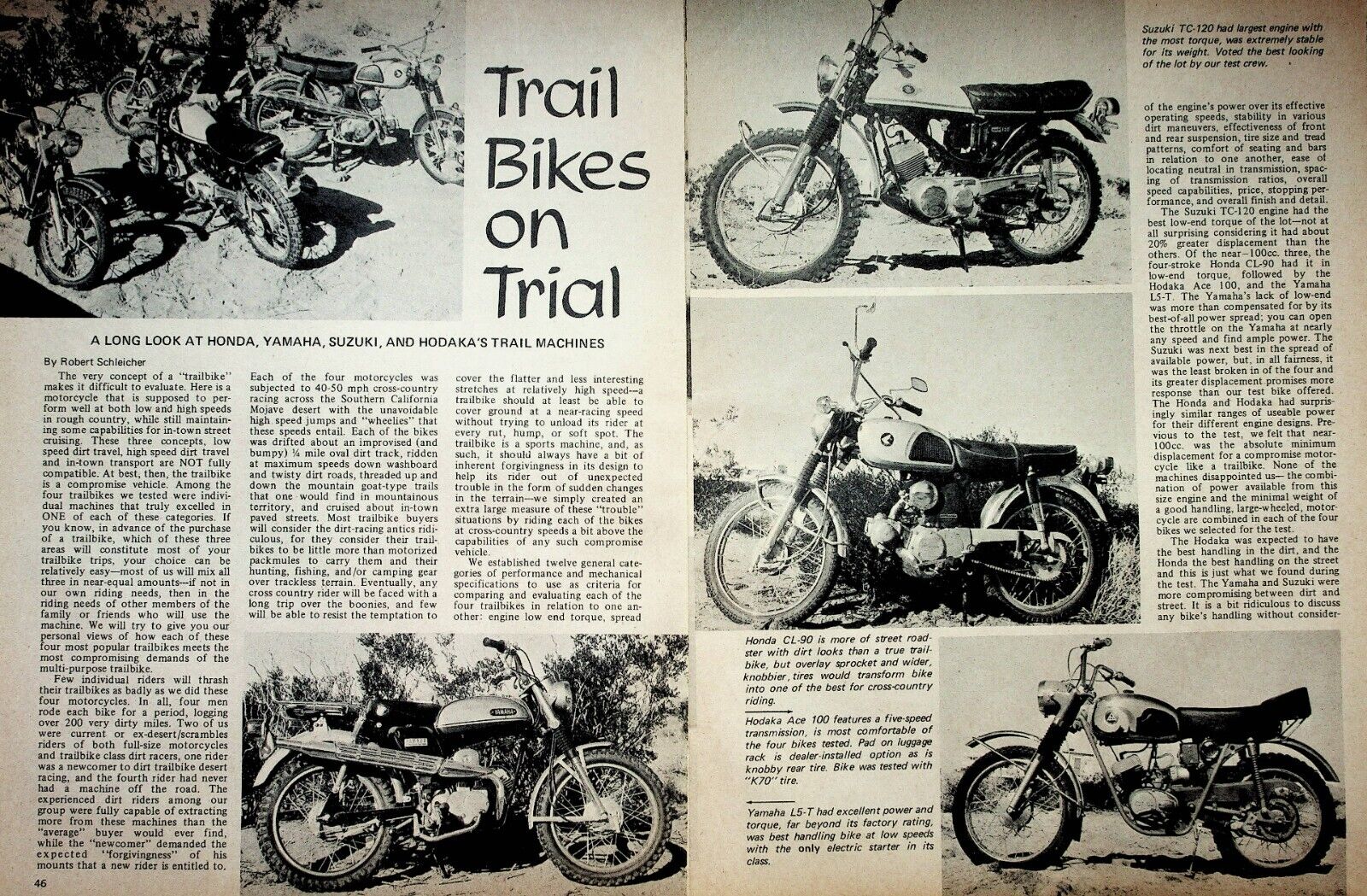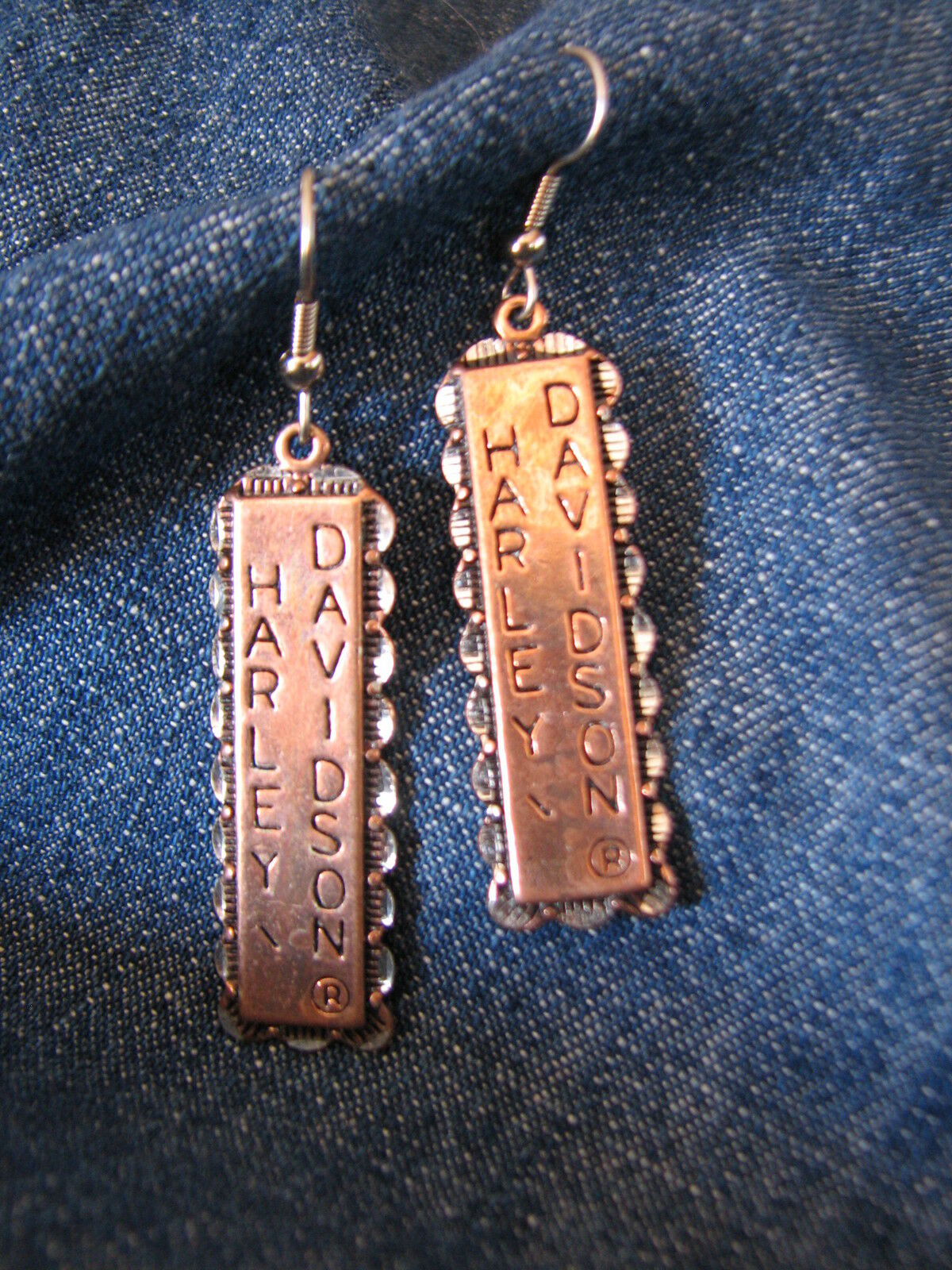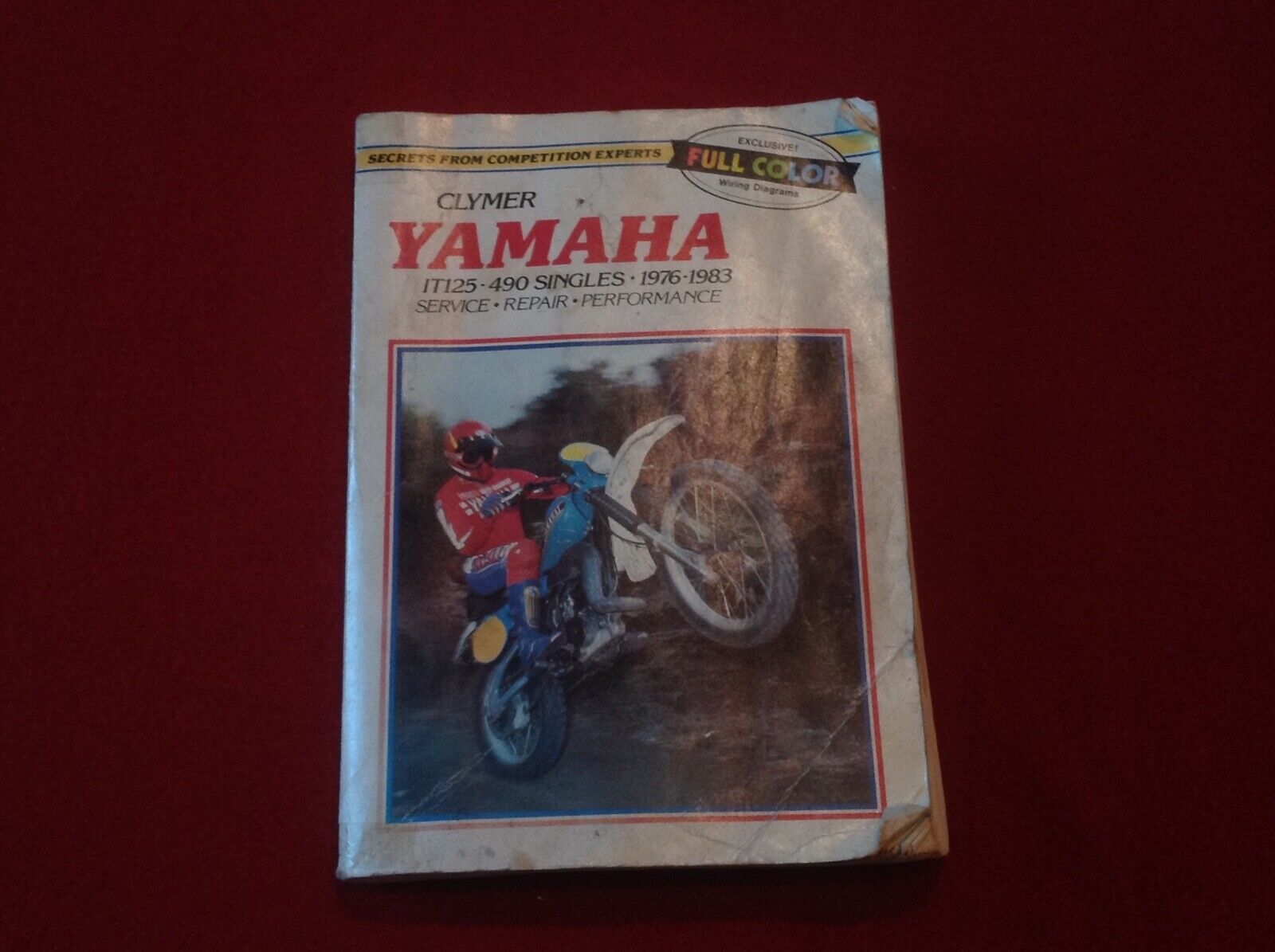-40%
1969 Trail Bike Motorcycle Comparison Test - 6-Page Vintage Article
$ 7.6
- Description
- Size Guide
Description
1969 Trail Bike Motorcycle Comparison Test - 6-Page Vintage ArticleOriginal, vintage magazine advertisement / article.
Page Size: Approx. 8" x 11" (21 cm x 28 cm)
Condition: Good
A LONG LOOK AT HONDA, YAMAHA, SUZUKI, AND HODAKA'S TRAIL MACHINES
By Robert Schleicher
The very concept of a “trailbike”
makes it difficult to evaluate. Here is a
motorcycle that is supposed to per-
form well at both low arid high speeds
in rough country, while still maintain-
ing some capabilities for in-town street
cruising. These three concepts, low
speed dirt travel, high speed dirt travel
and in-town transport are NOT fully
compatible. At best, then, the trailbike
is a compromise vehicle. Among the
four trailbikes we tested were indivi-
dual machines that truly excelled in
ONE of each of these categories. If
you know, in advance of the purchase
of a trailbike, which of these three
areas will constitute most of your
trailbike trips, your choice can be
relatively easy—most of us will mix all
three in near-equal amounts—if not in
our own riding needs, then in the
riding needs of other members of the
family or friends who will use the
machine. We will try to give you our
personal views of how each of these
four most popular trailbikes meets the
most compromising demands of the
multi-purpose trailbike.
Few individual riders will thrash
their trailbikes as badly as we did these
four motorcycles. In all, four men
rode each bike for a period, logging
over 200 very dirty miles. Two of us
were current or ex-desert/sera mb les
riders of both full-size motorcycles
and trailbike class dirt racers, one rider
was a newcomer to dirt trailbike desert
racing, and the fourth rider had never
had a machine off the road. The
experienced dirt riders among our
group were fully capable of extracting
more from these machines than the
“average” buyer would ever find,
while the “newcomer” demanded the
expected “forgivingness” of his
mounts that a new rider is entitled to.
46
Each of the four motorcycles was
subjected to 40-50 mph cross-country
racing across the Southern California
Mojave desert with the unavoidable
high speed jumps and “wheelies” that
these speeds entail. Each of the bikes
was drifted about an improvised (and
bumpy) % mile oval dirt track, ridden
at maximum speeds down washboard
and twisty dirt roads, threaded up and
down the mountain goat-type trails
that one would find in mountainous
territory, and cruised about in-town
paved streets. Most trailbike buyers
will consider the dirt-racing antics ridi-
culous, for they consider their trail-
bikes to be little more than motorized
packmules to carry them and their
hunting, fishing, and/or camping gear
over trackless terrain. Eventually, any
cross country rider will be faced with a
long trip over the boonies, and few
will be able to resist the temptation to
Trail
Bikes
on
Trial
cover the flatter and less interesting
stretches at relatively high speed—a
trailbike should at least be able to
cover ground at a near-racing speed
without trying to unload its rider at
every rut, hump, or soft spot. The
trailbike is a sports machine, and, as
such, it should always have a bit of
inherent forgivingness in its design to
help its rider out of unexpected
trouble in the form of sudden changes
in the terrain—we simply created an
extra large measure of these “trouble”
situations by riding each of the bikes
at cross-country speeds a bit above the
capabilities of any such compromise
vehicle.
We established twelve general cate-
gories of performance and mechanical
specifications to use as criteria for
comparing and evaluating each of the
four trailbikes in relation to one an-
other: engine low end torque, spread
Honda CL-90 is more of street road-
ster with dirt looks than a true trail-
bike, but overlay sprocket and wider,
knobbier, tires would transform bike
into one of the best for cross-country
riding.
Hodaka Ace 100 features a five-speed
transmission, is most comfortable of
the four bikes tested. Pad on luggage
rack is dealer-installed option as is
knobby rear tire. Bike was tested with
"K70" tire.
Yamaha L5- T had excel ten t po wer and
torque, far beyond its factory rating,
was best handling bike at low speeds
with the only electric starter in its
class.
Suzuki TC-120 had largest engine with
the most torque, was extremely stable
for its weight. Voted the best looking
of the lot by our test crew.
of the engine’s power over its effective
operating speeds, stability in various
dirt maneuvers, effectiveness of front
and rear suspension, tire size and tread
patterns, comfort of seating and bars
in relation to one another, ease of
locating neutral in transmission, spac-
ing of transmission ratios, overall
speed capabilities, price, stopping per-
formance, and overall finish and detail.
The Suzuki TC-120 engine had the
best low-end torque of the lot—not at
all surprising considering it had about
20% greater displacement than the
others. Of the near-lOOcc. three, the
four-stroke Honda CL-90 had it in
low-end torque, followed by the
Hodaka Ace 100, and the Yamaha
L5-T. The Yamaha’s lack of low-end
was more than compensated for by its
best-of-all power spread; you can open
the throttle on the Yamaha at nearly
any speed and find ample power. The
Suzuki was next best in the spread of
available power, but, in all fairness, it
was the least broken in of the four and
its greater displacement-promises more
response than our test bike offered.
The Honda and Hodaka had surpris-
ingly similar ranges of useable power
for their different engine designs. Pre-
vious to the test, we felt that near-
lOOcc. was the absolute minimum
displacement for a compromise motor-
cycle like a trailbike. None of the
machines disappointed us— the combi-
nation of power available from this
size engine and the minimal weight of
a good handling, large-wheeled, motor-
cycle are combined in each of the four
bikes we selected for the test.
The Hodaka was expected to have
the best handling in the dirt, and the
Honda the best handling on the street
and this is just what we found during
the test. The Yamaha and Suzuki were
more compromising between dirt and
street. It is a bit ridiculous to discuss
any bike’s handling without consider-...
16653









